Birds of prey
The term “raptors” refers to predatory birds that hunt other animals for food, also known as birds of prey.
In previous Wild Sarasota blogs and webinars we have covered eagles, hawks, falcons, and our nocturnal raptors- the owls of Florida. In this blog, we cover the basics about different types of Florida raptors. For a more in-depth discovery, watch our Wild Sarasota Webinars on eagles, hawks, falcons, owls, and other raptors which can be accessed from our Florida wildlife webpage.
Tricks of the Trade
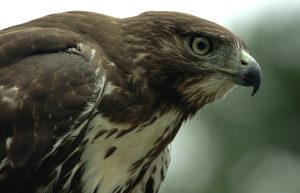
Each individual raptor is unique in their own way, designed to be a top predator in their habitat. Although each type of raptor differs from one another, they all possess a particular set of tools and strategies that allow these birds to be efficient predators.
- Raptors have hooked beaks that are used to bite, tear, and break into their prey.
- Most raptors have large eyes, taking up to approximately 25-66 percent of their skull, depending on the bird. Eyesight of most raptors far exceed that of humans. Special muscles in the skull keep their eyes in place during flight, enabling most raptors to have almost telescopic sight.
- Many raptors have long, sharp talons that are used to grasp and capture their prey. In its Latin origin, the word raptor means “to grasp or seize”.
Several types of birds can be defined as raptors, each varying in size, shape, adaptations and behavior.
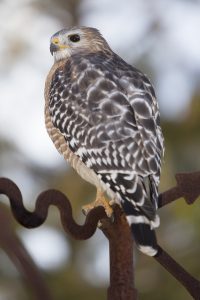
Hawks
Amongst the most intelligent birds, their size can range from medium to large with 250 different species worldwide. This group of raptors has broad wings and typically a long, broad tail used for soaring as they look for their prey on the ground below. They are more closely related to eagles, kites, and osprey than they are to falcons, which they are often confused with. The most commonly seen hawk in our area is the Red-shouldered Hawk.
Eagles

Eagles are large raptors with a massive bill and wingspan. Commonly seen soaring at extreme heights, an eagle can spot its prey from almost two miles away. Worldwide, there are 60 different species of Eagles, but North America is only home to two species: the Bald Eagle (Haliaeetus leucocephalus), the national bird of the United States, and the Golden Eagle (Aquila chrysaetos), the national bird of Mexico. In Florida we have both resident and migratory Bald Eagles, many of which can be seen flying and nesting in our local natural areas.
Kites

Kites are a group of raptors that prefer the warmer regions of the world. Kites typically have a lighter build, short beak, and long narrow wings and tail. There are four species of kites in Florida. Two are resident species, the Snail Kite and the White-tailed Kite; while two other species will only be found here during breeding season. The Mississippi Kite can be found in the panhandle. In our area, you may spot the Swallow-tailed Kite (Elanoides forficatus) February through September before it heads to South America for the winter. It will maneuver through the air by adjusting its deeply forked tail, soaring over the swamps and marshes of Florida searching for delicious insects to consume.
Osprey
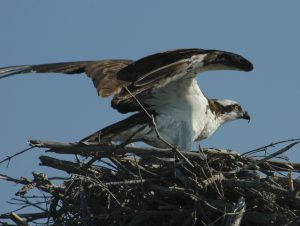
Also known as the fish hawk. This raptor has long legs, feet, and like owls, an opposable outer toe that allows them to grab their prey with two toes in the front and two toes in the back. Ospreys have superb fishing skills, with a success rate as high as 70 percent each time it dives for a fish. The Osprey (Pandion haliaetus) is a year-round Florida resident and it is not uncommon to spot their large nests crafted with sticks and twigs sitting atop light poles, channel markers, telephone poles, or any man made structure.
Falcons
Swift, speedy, and agile fliers; this group of raptors is highly specialized and hunt other birds as their prey. Their long, narrow and angled wings are designed for quick maneuvering through the air. The Peregrine Falcon (Falco Peregrinus) is a true testament to a falcon’s flight capabilities. Reaching speeds up to 200 miles per hour or more when dropping down on its prey in an incredible stoop, making this raptor, the fastest animal in the world.
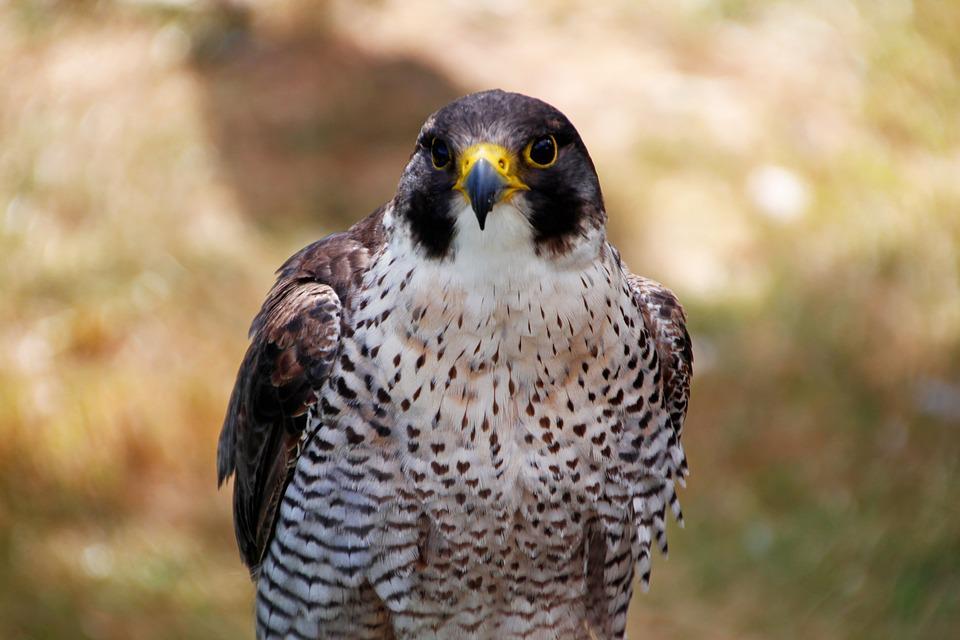
Vultures
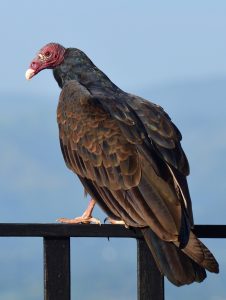
The raptor that doesn’t kill. Their stomachs are as acidic as the acid of a car battery, meaning this bird can eat almost anything. Vultures provide an essential service to our ecosystems by cleaning out dead animal carcasses, which halts the rotting of flesh and spread of disease. Both black vultures and turkey vultures make Florida their home. Black vultures can be differentiated by their black heads and grey tips to the underneath of their outermost flight feathers. Black vultures do not have an advanced sense of smell and will often soar higher and follow lower flying turkey vultures to find a meal. Turkey vultures have red heads and the entire margin of the underneath of their wings appears grey when viewed from below. Both can be found soaring in circles on thermals, on roadsides or waiting around dumpsters for a delicious meal.
Condors
The fabulous California Condor (Gymnogyps californianus) is the largest bird in North America. Found only in Southern California, Baja California, and the Southwest, California Condors nest on high cliffs. Unlike most raptors, they do not have long, sharp talons. Similar to vultures, condors sport featherless heads and legs which allows them to stay relatively clean and disease-free as they munch on morsels of carrion from animals as large as sea lions, cattle, and even whales!

Owls

The only family of nocturnal raptors in North America. They are not easily mistaken for any other species of bird. Their large satellite-shaped face and forward-facing eyes help them stand out from the rest. Their extremely large eyes are known to pick up more light rays than most birds, assisting their night vision during nocturnal hunting. Debunking a common myth, owls can not turn their head all the way around, but can manage a surprising 270 degree range of motion! What really makes the owl such an efficient predator of the night, is their silent flight coupled with the best hearing of any animal ever tested. Florida is home to five species of owls, including the unique diurnal burrowing owl.
Tribute to Raptors
Each of these magnificently unique raptor families play a vital role in our ecosystems as predators. Hunting such a wide variety of species such as insects, reptiles, amphibians, mammals, birds and fish, raptors are an integral link in the animal food chain and help maintain a stable ecosystem.
To Learn More About Florida’s Raptors:
- Watch our Wild Sarasota Webinars about Eagles, Hawks, Falcons, Owls, and Other Raptors on our Florida Wildlife webpage.
- Enjoy information about a variety of bird species at Cornell Lab of Ornithology’s All About Birds website.
- Don’t forget to visit our local Sarasota Audubon Society and our Venice Area Audubon Society.
Read all our Wild Sarasota blogs HERE
 3
3
